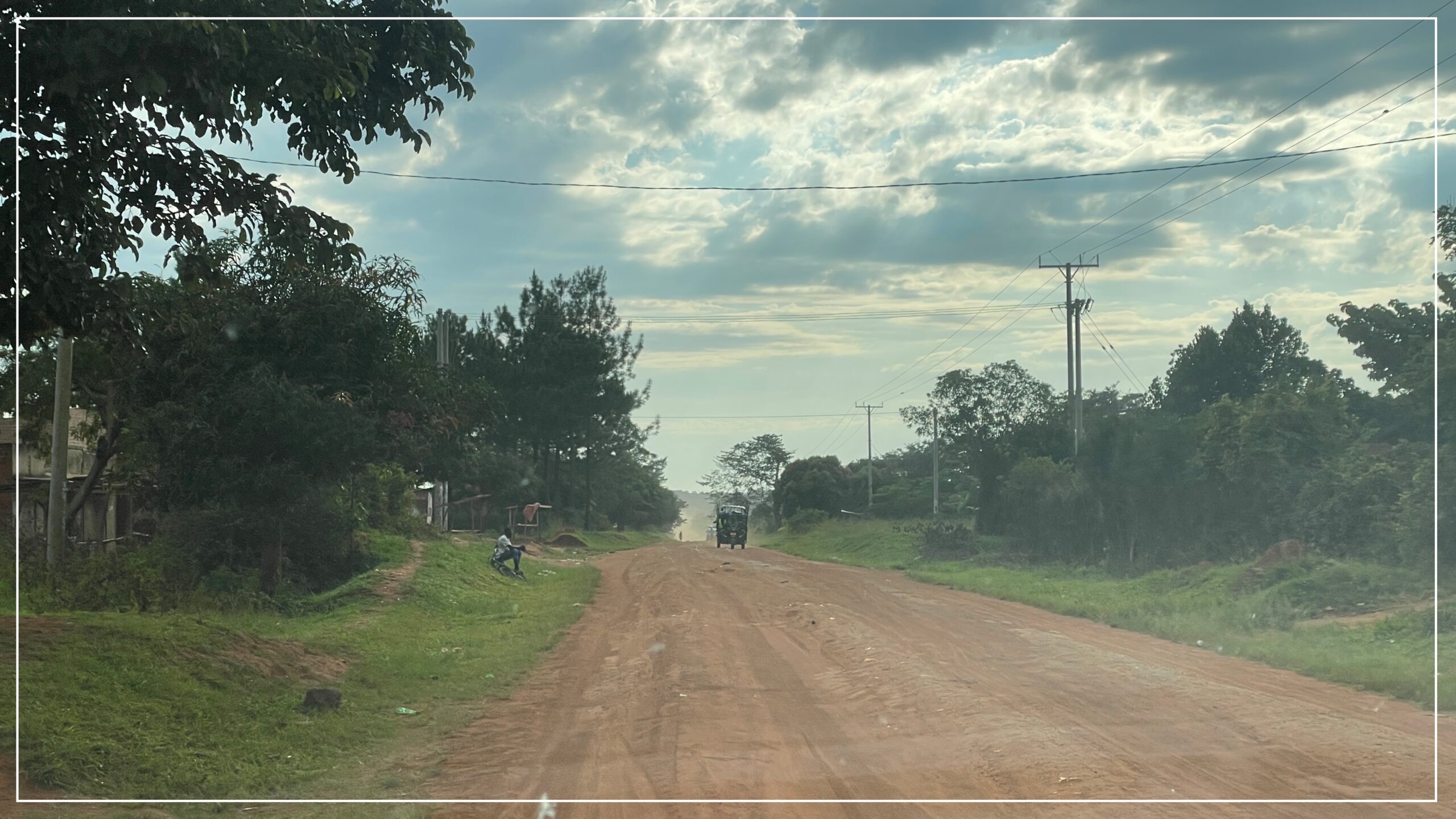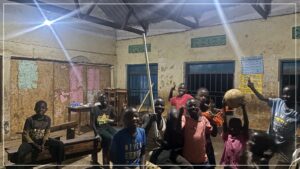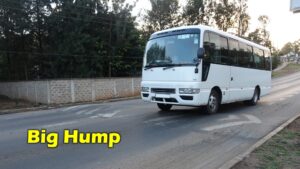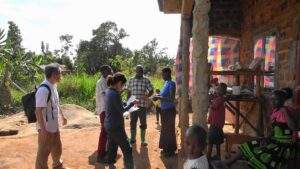In the last article, we introduced our new solar system at a school in Uganda.
This time, we share the second phase, focusing on small businesses in Nakasongola District, about 120 km north of Kampala.
About Uganda
Uganda is a landlocked country in East Africa.
It has a population of about 48 million people, and about 80% live in rural villages.
In Kampala and other big cities, people can access electricity, but blackouts happen often. In rural areas, even if power lines run along the main roads, many households and shops cannot afford the cost to connect.
Uganda also depends mostly on hydropower. Because of this, electricity supply is unstable during the dry season or heavy floods. That is why solar systems are so important for rural communities.
The Trial Area
Our new trial took place in Nakasongola District, north of the school where we worked before.
This area has a low electrification rate.
From our survey, we found that larger villages are usually connected to the grid. But smaller villages are not.
So, we decided to focus on these smaller communities.
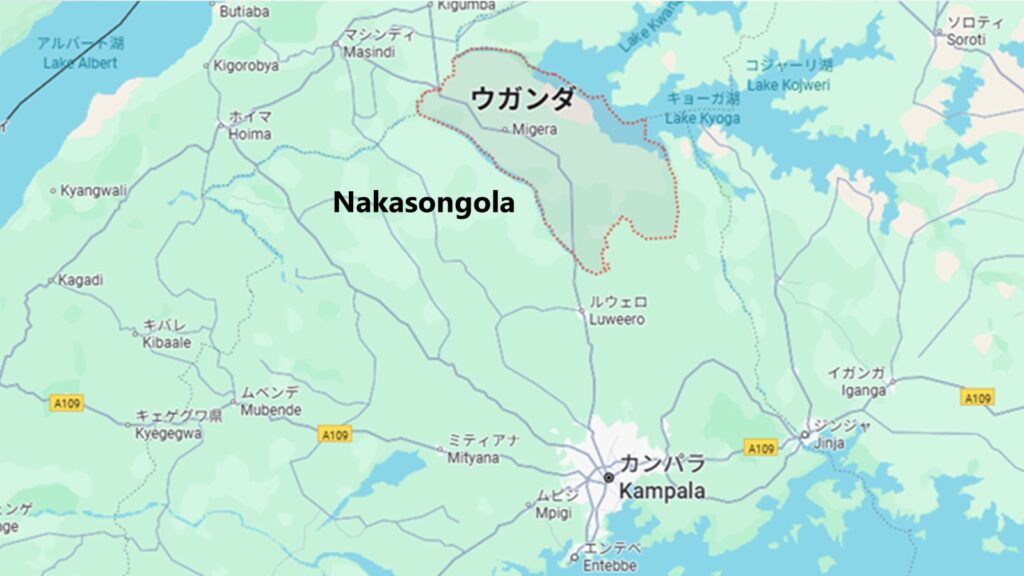
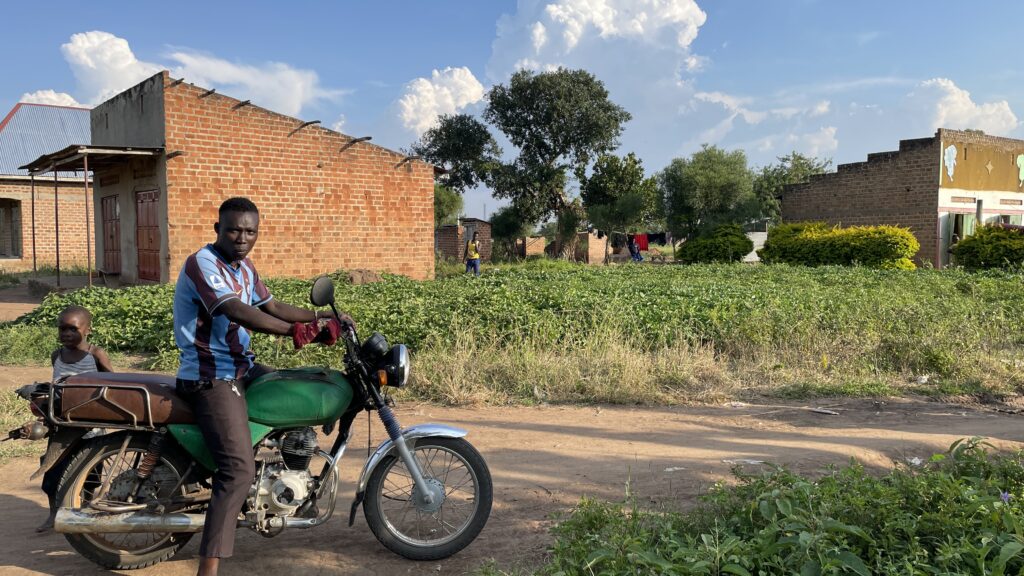
What We Saw in the Villages
When we visited, we found small shops even in villages without electricity.
Some bigger shops already had solar systems, but the panels were very small, usually only 50W or 75W.
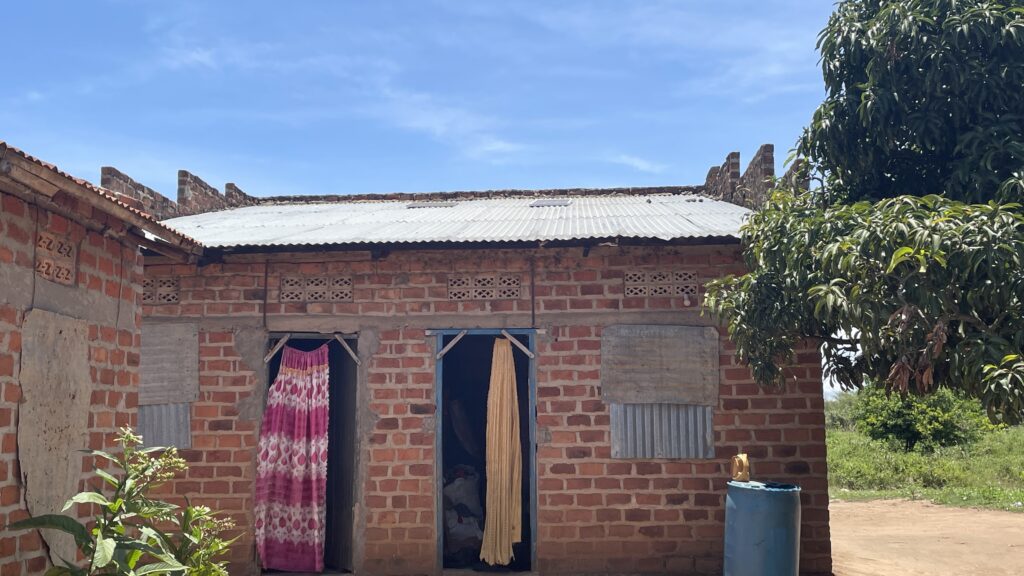
Most shops used DC products such as DC TVs and DC refrigerators. This is because local inverters break down often, so people avoid using them.
We also learned about a unique way of using freezers. Freezers are more popular than refrigerators because they cool faster. But villagers do not run them all day. They switch them on only from afternoon to evening, just to cool drinks. Then they turn them off before the drinks freeze.
This shows how people use their limited electricity with smart ideas. But at the same time, the small power systems are not enough for real business needs.
The Challenges
Many small shops face the same problems:
- They can only choose one main use, like TV or refrigerator.
- Phone charging is limited to 2–3 phones at once.
- Batteries break down often, and replacement is expensive.
Some shops even installed two 75W systems, but still not enough.
Shop owners often said: “If we had stable electricity, we could offer more services.”
Our New Solar System
To answer these needs, we proposed a new solar system with up to 480W panels.
This system has three important points:
- It can run without batteries during the day.
- With batteries, the pass-through technology reduces battery stress and makes them last longer.
- It works very well with DC products already common in Uganda.
Unlike the small old systems, this new model can run several devices at the same time, such as a TV, freezer, and phone charging station.
Examples from the Trial
Barber Shop
One shop was a barber. Inside, they had electric clippers, a TV, and lights.
Before, their small solar system could not run the TV for long, and phone charging was limited to 2–3 devices.
We installed a 300W solar system. Now, the shop can run all their equipment easily and also charge up to 10 phones at once with fast charging.
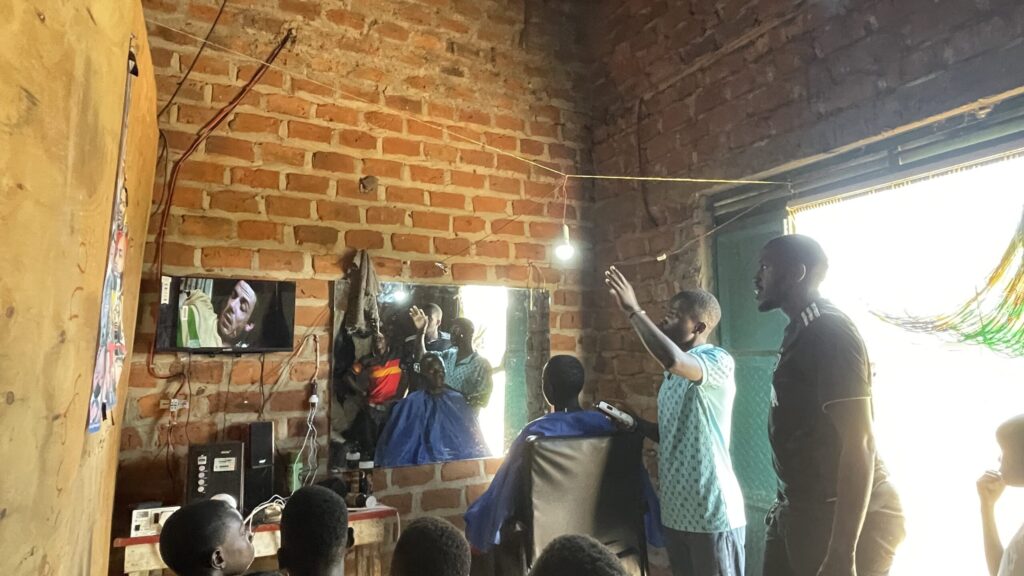
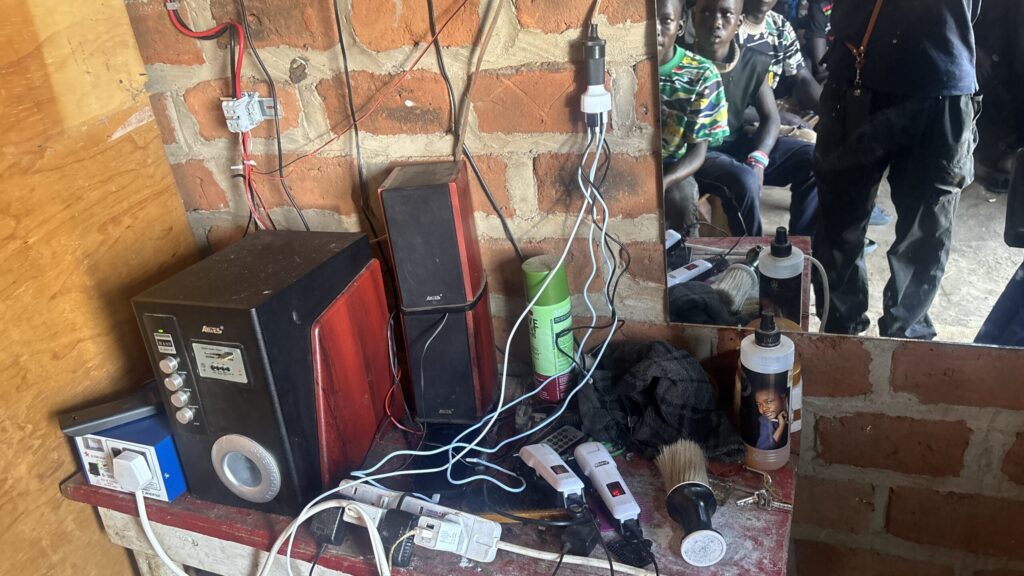
Drink Shop
Next door, another shop sold drinks. Cold drinks are very popular and can be sold at higher prices.
When the owner saw the barber’s shop improved, he quickly went to the town center and bought a freezer.
At first, 300W was not enough for both shops. So we upgraded the system to 450W. Now, the freezer and refrigerator work well, and the shop can always offer cold drinks. At night, the shop even looks like a small bar where people gather to watch TV.
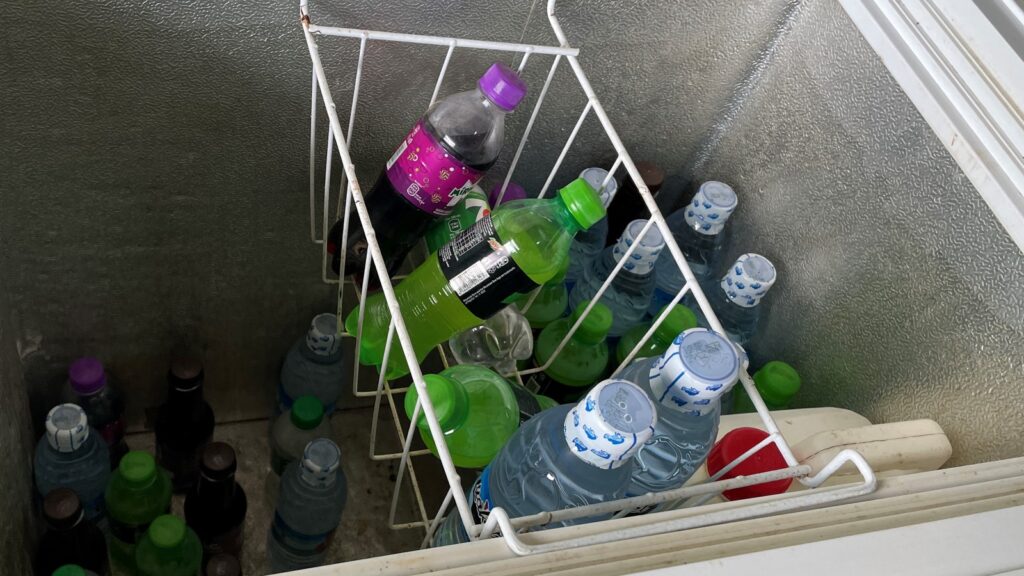
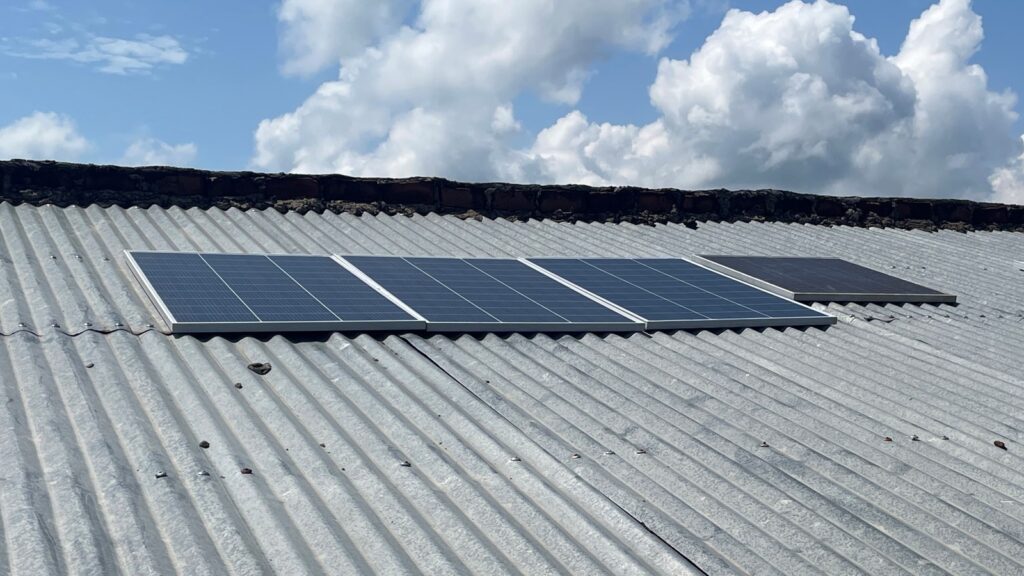
Another Drink Shop
In another village, a drink shop already had a freezer, but the 75W system was too weak. If they set the freezer to “high,” the electricity would not last. They also wanted to start phone charging but could not.
We changed their system to our controller with 300W panels. Now, they can run the freezer on “high” and also provide a charging station for 10 devices at the same time.
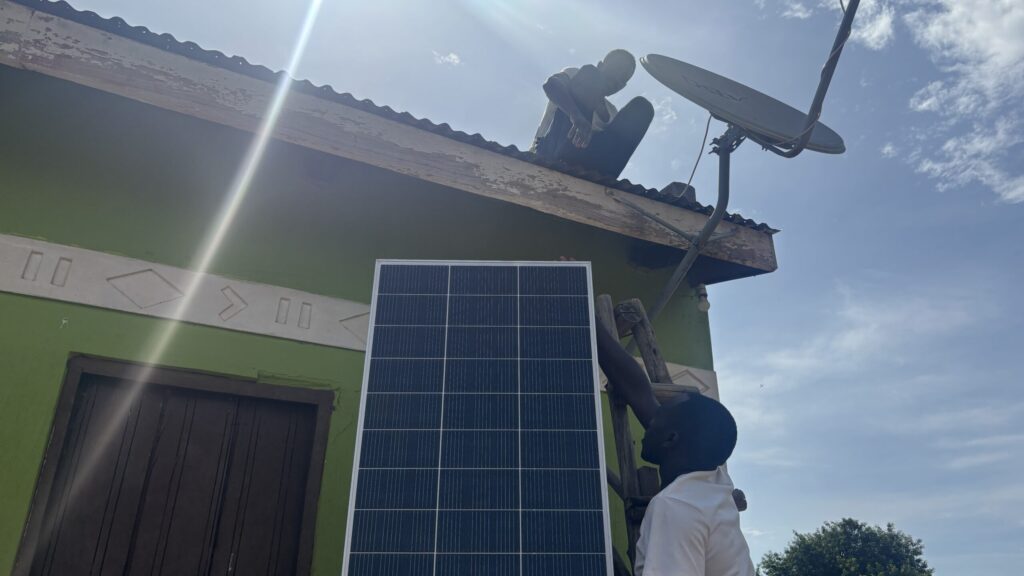
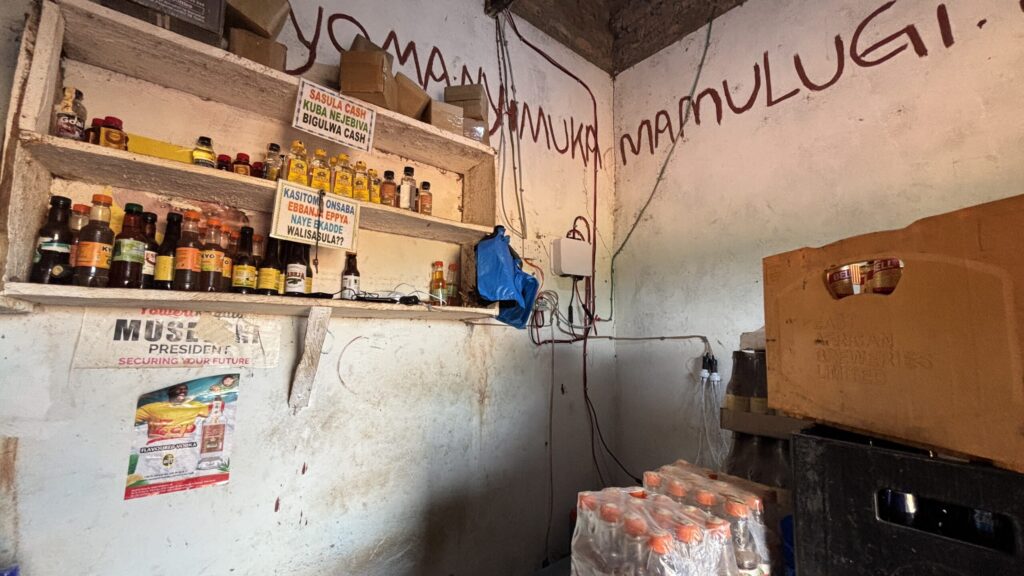
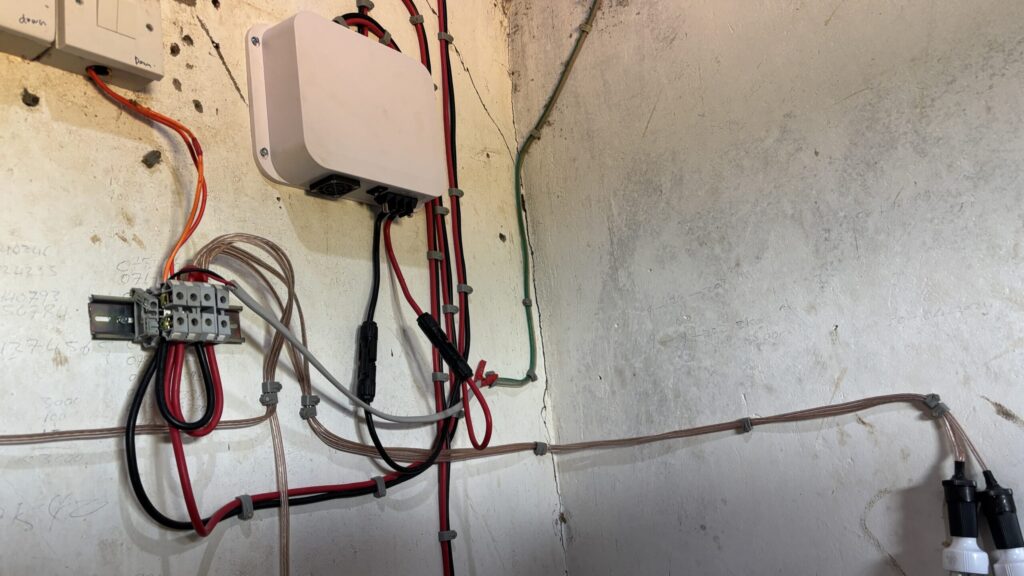
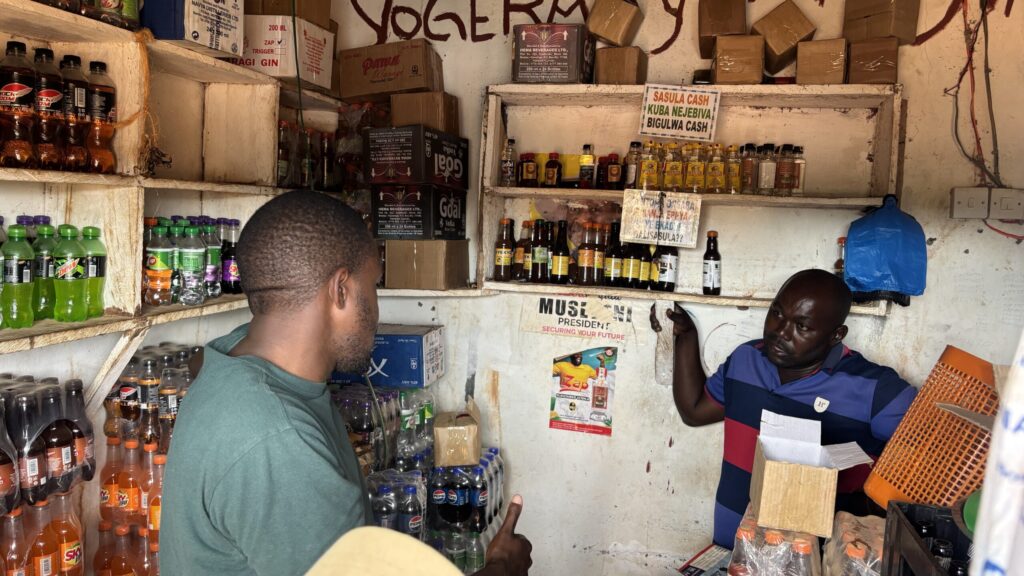
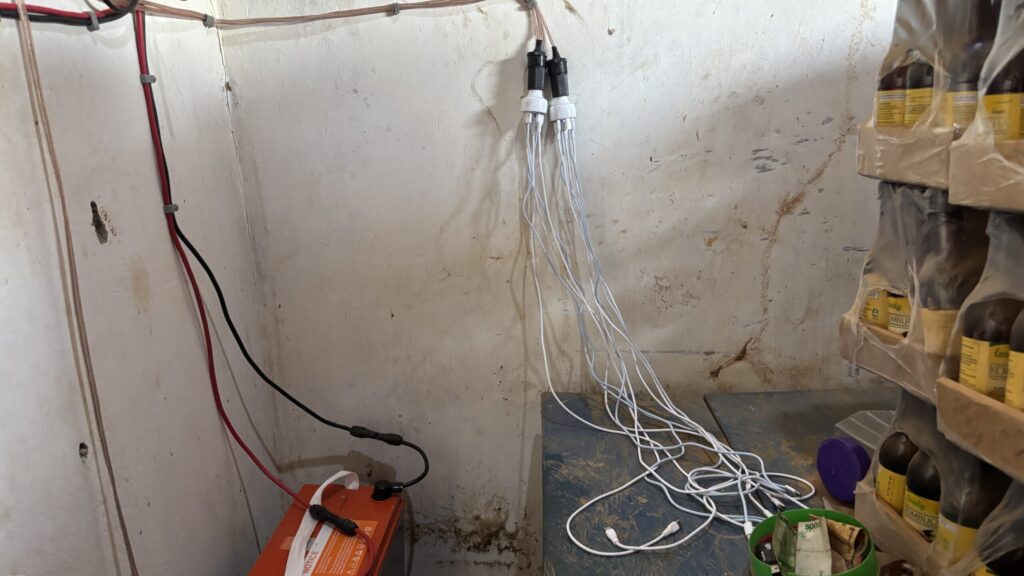
Conclusion
Phone and device charging is still a big demand. But the need is growing beyond that.
Shops now want to provide fast charging, plus TVs, music, and cold drinks — all at the same time.
With our new solar system, small businesses can expand their services, improve income, and bring better living conditions to the community.
